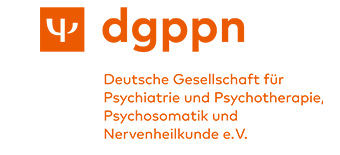Alcohol consumption in adolescence and its consequences
Low-risk and high-risk alcohol consumption
In adults, the boundaries of low-risk consumption of alcohol are defined as follows: Women can drink one standard unit of alcohol on at most five days per week, and men can drink two. One standard unit of alcohol corresponds, for example, to 0.3 L of beer, 0.2 L of wine or 4 cL of spirits.
For children and adolescents, there are no uniform values for low-risk alcohol consumption. As their organs are still developing, the damaging effect of alcohol is clearly higher.
In children and adolescents, the following definitions apply:
If a girl drinks at least four and a boy at least five standard units of alcohol, one speaks of so-called "binge drinking". This does not only harbour the danger of becoming dependent. Such an amount of alcohol has a clear impact on the mental and physical characteristics of an adolescent. For instance, under alcohol intoxication, accidents, increased readiness for violence or unwanted sexual acts can occur.
How frequent is high-risk alcohol consumption?
Alcohol is by far the most widespread psychoactive substance in adolescents in Germany. Although on the whole, fewer adolescents drink, the consumption of those who do has become much more extreme. "Binge drinking" is a dangerous pastime which is pursued in Germany by every third boy or young man under 25. In girls the same age, around one in four drinks excessively at least once a month.
In 2016, nearly 22,000 adolescents received hospital treatment due to acute alcohol intoxication or an accident connected to alcohol abuse.
What happens with alcohol intoxication?
Alcohol affects everybody differently: Depending on the form on the day and what a person is used to, a certain amount of alcohol can lead to different physical and psychological reactions. With increasing alcohol concentration in the blood, the effect of alcohol changes. Dangerous is the so-called hypnotic stage, in which consciousness is already clearly limited. It can lead to aggressiveness, coordination disturbances (e.g. swaying or tripping) and articulation disturbances (e.g. slurred speech).
If the person still continues to drink, the narcotic stage occurs. The adolescent becomes unconscious and can reach a state of shock more or less rapidly. The blood pressure is too low, the gag reflex and the ability to react to environmental stimuli (e.g. cold) is so limited that the effect of the alcohol reaches a life-threatening degree. For example, vomit can bring about a respiratory standstill, or directly life-threatening events such as freezing can set in.
Generally speaking: The younger a child is, the lower the alcohol tolerance. An alcohol-induced coma in children and adolescents can be reached even with a very low concentration of alcohol in the blood.
Why do adolescents drink?
Through the consumption of alcohol, adolescents are escaping from parental control and thus demonstrating being grown up and independent. Relationships to peers assume an increasingly important role.
Under the influence of alcohol, some adolescents find it easier to make contacts and to consolidate their group membership. Thus, from the perspective of the adolescent, alcohol has positive connotations. As adolescents frequently fluctuate between self-grandeur and great self-doubt, alcohol offers itself as a problem solver here: It gives them supposed security and makes worries and hardships appear smaller.
How are mental illnesses and alcohol abuse connected?
Some adolescents try – consciously or subconsciously – to get to grips with themselves using alcohol. This particularly applies for depression, anxiety disorders, social conduct disorders, untreated attention deficit / hyperactivity disorders (ADHD), traumas, thoughts about death, self-harming, and eating disorders.
Mental illnesses can also be a consequence of alcohol abuse and strengthen it. In order to appropriately address high-risk alcohol consumption in counselling and therapy, it is important to recognise and treat possible secondary illnesses.
How does one recognise high-risk consumption behaviour?
Drinking habits of parents and friends influence the adolescent. It becomes critical when the alcohol consumption is not questioned in the circle of friends but is seen as a natural part of life, meaning that as a consequence, the amount and frequency of drinking can at times even increase.
Whoever drinks alcohol regularly becomes used to its effect and almost automatically increases the amount. If the consumption of alcohol becomes a prerequisite for fun and enjoyment of contacts, caution is warranted. Adolescents tend to underestimate their degree of intoxication and judge the repeated and excessive alcohol consumption as harmless. Warning signs are large numbers of "blackouts" or "the mind going blank".
With the online offer "check your drinking", one can check his or her drinking behaviour.
What can parents and friends do?
With a stable psyche and a healthy feeling of self-worth, children are well equipped to learn how to deal with alcohol responsibly. In a circle of friends with responsible peers, the adolescents themselves ensure that everybody gets home safely after a party.
However, the parents play the most important role – as role models in dealing with alcohol and also in dealing with conflicts within the family. Adolescents should be made aware that their alcohol consumption doesn't go unnoticed. Therefore, it is important that parents make their standpoint on the theme of alcohol clear and are ready to discuss it with their offspring. At the same time, clear rules for dealing with alcohol should be established.
The adolescents should also be aware of the consequences – dwindling performance at school is often associated with alcohol consumption which contributes to adolescents' recognising that they have a problem with alcohol. If this is the case, parents should encourage them to get outside help – for example through a counselling centre or psychotherapist.
Contact points
A telephone conversation with the GP or paediatrician, a trusted teacher, but also telephone contact with a counselling centre paves the way for further support. Some counselling facilities also offer contact via email or chat. In the University Medical Center Hamburg-Eppendorf, a special counselling and treatment offer is available in the Drug and Alcohol Outpatient Department for Adolescents. A list of further contact points for those at risk of or suffering from addiction can be found in the Therapy Guide for Psychiatry and Psychotherapy (German version) of the City of Hamburg from page 146.



![Mental [m]illnesses[/m]](/cache/com_pagebuilder/d6f7840e5d4b24df08ab5554d6ea6cf3.jpg)
